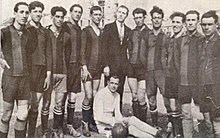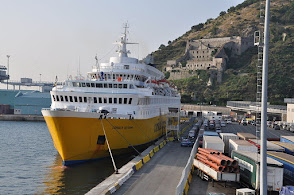Suso Cecchi D'Amico - screenwriter
Woman who scripted many of Italy's greatest movies
Suso Cecchi D’Amico, the most accomplished and sought-after screenwriter in 20th century Italian cinema, was born on this day in 1914 in Rome. She collaborated on the scripts of more than 100 films in a career spanning 60 years and worked with almost every Italian director of note, particularly the pioneers of neorealism, the movement in which she was a driving force. The classic films in which she was involved are some of the greatest in cinema history, including Vittorio De Sica's Bicycle Thieves (1948), William Wyler's Roman Holiday (1953), Mario Monicelli's I Soliti Ignoti (1958), which was released in the United States and Britain as Big Deal on Madonna Street, and Francesco Rosi's Salvatore Giuliano (1962). She also worked with Michelangelo Antonioni on Le Amiche (The Girlfriends, 1955) and Franco Zeffirelli on Jesus of Nazareth (1977), but she was best known for her professional relationship with Luchino Visconti, for whom she was the major scriptwriter on almost all his films from Bellissima (1951) to The Innocent (1976), including his acclaimed masterpieces Rocco and His Brothers (1960) and Il Gattopardo (The Leopard, 1963). Read more…
______________________________________
Beppe Grillo - comedian turned activist
Grillo founded populist Five Star Movement
The comedian turned political activist Beppe Grillo was born on this day in 1948 in Genoa. Grillo is the founder of the Five Star Movement - Movimento Cinque Stelle - an Italian political party that has enjoyed rapid growth in recent years. It enjoyed one of its first high-profile successes when Virginia Raggi was elected Mayor of Rome in 2016, while Luigi Di Maio, who succeeded Grillo as leader, became Italy’s foreign minister and deputy prime minister between 2018 and 2019. The party's current president, Giuseppe Conte, was prime minister of Italy from 2018 to 2021. The Five Star Movement - M5S - polled more than 25 per cent of the votes for the Chamber of Deputies at the 2013 elections in Italy, increasing its share to 32.7 per cent in 2018, which made it Italy’s largest party. At the same time as Raggi won 67 per cent of the vote in Rome, another M5S candidate, Chiara Appendino, was elected Mayor of Turin, beating the Democratic Party candidate into second place. Grillo launched M5S as a protest group in 2009 but his ability to inspire audiences led to a rapid growth in popularity. It has positioned itself as anti-corruption, anti-globalisation and pro-transparency. Read more…
_____________________________________
Guglielmo Ferrero - journalist and historian
Nobel prize nominee who opposed Fascism
The historian, journalist and novelist Guglielmo Ferrero, who was most famous for his five-volume opus The Greatness and Decline of Rome, was born on this day in 1871. The son of a railway engineer, he was born just outside Naples at Portici but his family were from Piedmont and while not travelling he lived much of his adult life in Turin and Florence. A liberal politically, he was vehemently opposed to any form of dictatorship and his opposition to Mussolini’s Fascists naturally landed him in trouble. He was a signatory to the writer Benedetto Croce's Anti-Fascist Manifesto and when all liberal intellectuals were told to leave Italy in 1925, he refused. Consequently he was placed under house arrest. It was only after four years, following appeals by officials from the League of Nations and the personal intervention of the King of Belgium, that he was allowed to leave Italy to take up a professorship at the Graduate Institute of International Studies in Geneva. Ferrero’s earliest works were in the field of sociology and criminology, inspired by his friendship with Cesare Lombroso, sometimes called the ‘father of modern criminology’. Read more…
_______________________________________
Book of the Day: A History of Italian Cinema, by Peter Bondanella and Federico Pacchioni
This second edition of A History of Italian Cinema, an update of the bestselling definitive guide, was published to celebrate its 35th anniversary in 2018. Building upon decades of research, Peter Bondanella and Federico Pacchioni’s new edition brings the definitive history of the subject, from the birth of cinema to the present day, up to date with a revised filmography as well as more focused attention on the melodrama, the crime film, and the historical drama. The book is expanded to include a new generation of directors as well as to highlight themes such as gender issues, immigration, and media politics. Accessible, comprehensive, and heavily illustrated throughout, this is an essential purchase for any fan of Italian film.Peter Bondanella is the author of a number of groundbreaking books, including Hollywood Italians, The Cinema of Federico Fellini, and The Films of Roberto Rossellini. In 2009, he was elected to the European Academy of Sciences and the Arts for his contributions to the history of Italian cinema and his translations or editions of Italian literary classics (Dante, Boccaccio, Machiavelli, Vasari, Cellini). Federico Pacchioni is Sebastian Paul & Marybelle Musco Chair of Italian Studies at Chapman University, Orange, California, USA.
.jpg)
.jpg)




.jpg)

.jpg)

.jpg)



%20(1).jpg)

.jpg)



%20(1).jpg)









.jpg)


